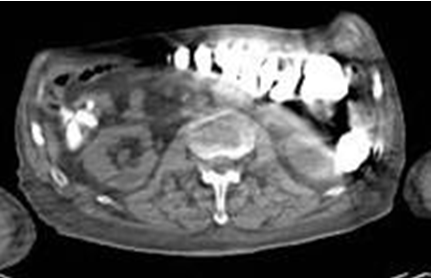| Oral Contrast |
Negative / Neutral contrast |
|
PO water (about 1000 mL) is given for most abdominal indications at Hopkins.
|
VoLumen (a mixture of sorbitol and very dilute barium 0.1% w/v) results in improved bowel distension compared to water, and is used for CT enterography.
|
|
Positive contrast |
|
In general, positive contrast (eg PO Omnipaque) is not required for most CT studies, including those performed for appendicitis or SBO. The presence of positive contrast can actually be detrimental, because it can obscure the detection of subtle bowel wall thickening or intraluminal hemorrhage.
Positive contrast is helpful in the following circumstances:
- Concern for bowel fistula (evaluate for contrast leakage to skin/bladder/etc)
- Intraabdominal abscess (helps distinguish intraluminal from extraluminal fluid)
|
|
Barium |
|
While preparations of dilute barium (2% w/v) are available as oral contrast agents for CT, these are not commonly used at our institution.
When barium is present at the concentrations used for fluoroscopy studies (60-100% w/v), it causes substantial streak artifact that can obscure adjacent structures. If you see barium on a scout image, depending on the indication for the exam and the stability of the patient, consider counseling the clinician to delay the scan until after the barium has passed, which would allow for a more useful study.

Streak artifact from barium |
|
|
Rectal contrast |
|
Add 30 cc Omnipaque 350 to a 1 liter bag of saline or water.
|
|